As a native Texan, it’s my birthright to have a palate for BBQ with the inborn ability to decipher the good from the bad. Like whiskey, BBQ has region-specific stylings unique to its location. Dare I say meat terroir? Texas is renowned, among other things, for brisket. South Carolina is celebrated for pork.
Speaking personally, I’ve never really associated California with BBQ. Fish tacos? Yes. BBQ anything? No.
Until now. California-based pitmaster and restauranteur Matthew Horn brought a taste of his West Coast ‘cue to Austin – and I was truly taken aback by his flavorsome brisket. It wasn’t the Central Texas technique I was accustomed to, but my innate taste for the goodness of quality BBQ isn’t limited by state or country. I can appreciate styles even if they aren’t what I was raised with.
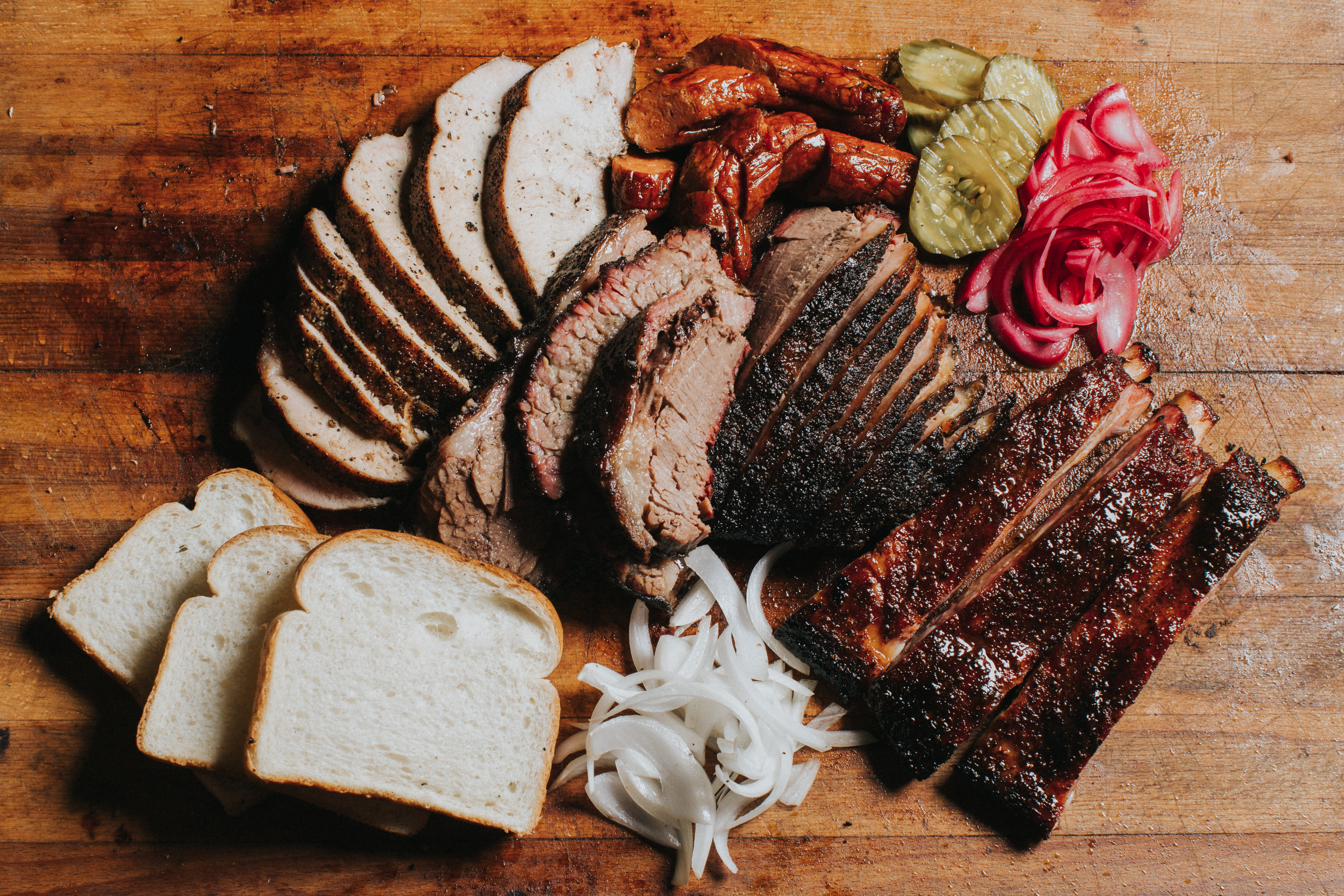
My love for Horn’s brisket motivated me to do a little digging on the chef. He opened his first restaurant in October of 2020 and Horn Barbecue, in Oakland, CA, drew immediate praise from BBQ connoisseurs and national media. He was named one of Food & Wine’s Best New Chefs in America, and Horn Barbecue earned a coveted Michelin Bib Gourmand designation.
This year, Horn continues to unlock massive achievements. He opened his sophomore concept, Kowbird, and Horn Barbecue was nominated for a James Beard Award in the Best New Restaurant category. In April, Horn released his debut book, Horn Barbecue: Recipes and Techniques from a Master of the Art of BBQ. The book features 70 recipes, plenty of tips, and insight into Horn’s humble beginnings.
“I want people to understand that all this didn’t happen overnight,” Horn told me later. “It’s happened over a period of time. And I wanted to translate that into a book and give people insight on the journey.”
Horn cites his mother and two grandmothers as his biggest culinary influences.
“I try to preserve the foodways of the South based on what I grew up on,” he says. “And pay homage to the men and women that clicked for me – more so the women – that prepared food for me — showing them respect in everything I do. I’m not the man I am without the women in my life.”
With summer upon us and more opportunities to fire up the grill, Trager, or open fire! So how can you level up your BBQ brisket skills? By taking Matthew Horn’s advice, naturally. Read on for the inside scoop on how to make the perfect brisket from the expert himself.
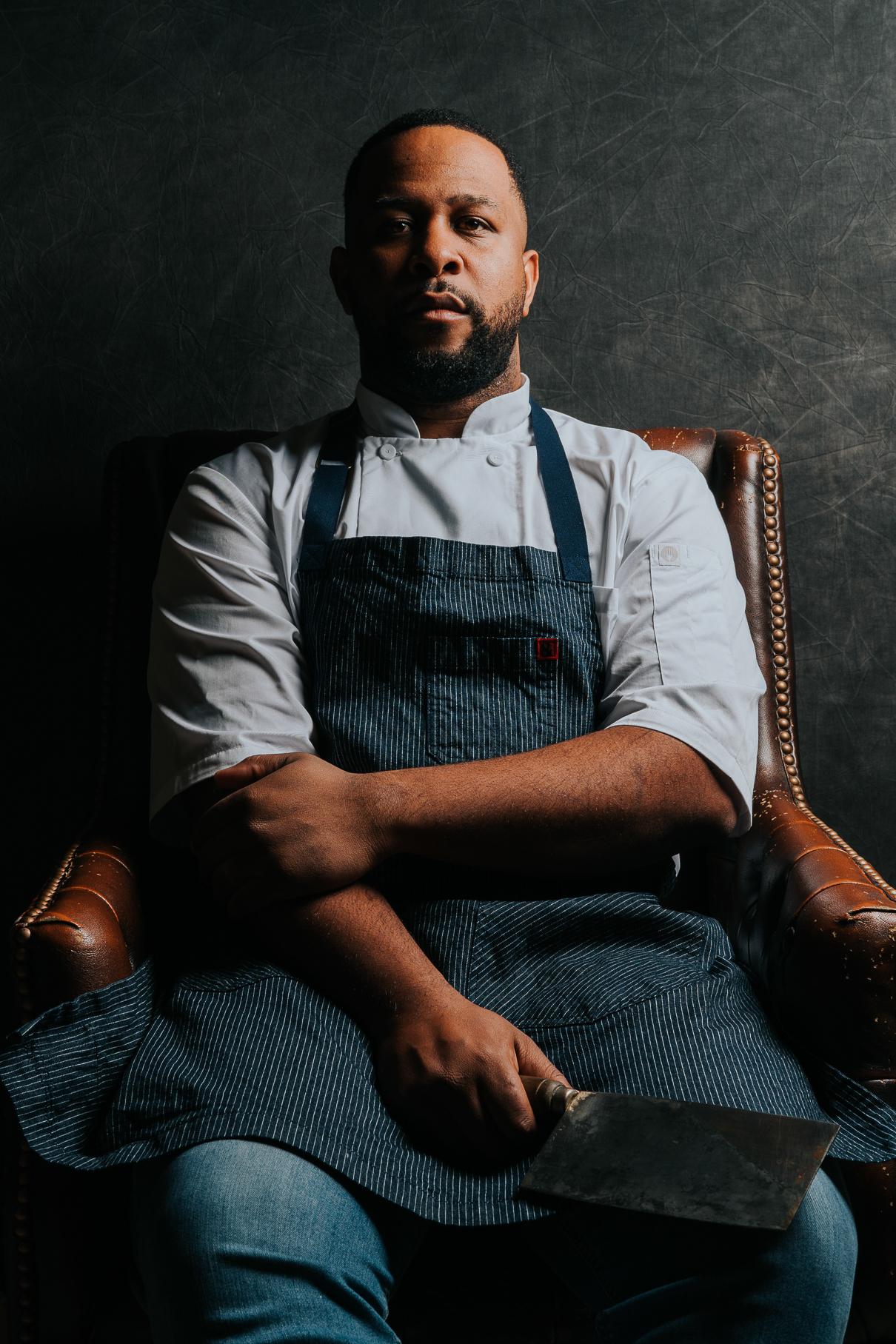
First, what do you feel is a common mistake people make when barbecuing brisket?
So, one of the most common mistakes people make is trying to rush the process of cooking a brisket. Usually, when you begin that journey of cooking a brisket, you have to go into it already, accepting that you have to enjoy this process. It will be a very long process and will take a long time to cook. We usually cook our brisket for 15-18 hours, but at a minimum, you will cook a brisket for 12-14 hours. So, with that being said, you have to accept that it will be a long cooking time and not so much focus on the destination. Enjoy the journey of the cook. There’s so much going on with that – you’ll spray the meat; some people rotate, and some don’t. We’re rotating the brisket because we’re cooking such a large amount of briskets at the restaurant.
Then, you just have that whole process of constantly managing the fire. Also, I think that people should trust their smoker can do what it was made to do. Then, make sure that you’re keeping a clean fire and your temperature consistent. You don’t want to lift the lid too much because we’re cooking it for such a long time; you get anxious to see what’s going on with the cook. And by lifting the lid, you allow the temperature to fluctuate, which reflects on the meat from the way that the meat has responded to the consistency of the temperature.
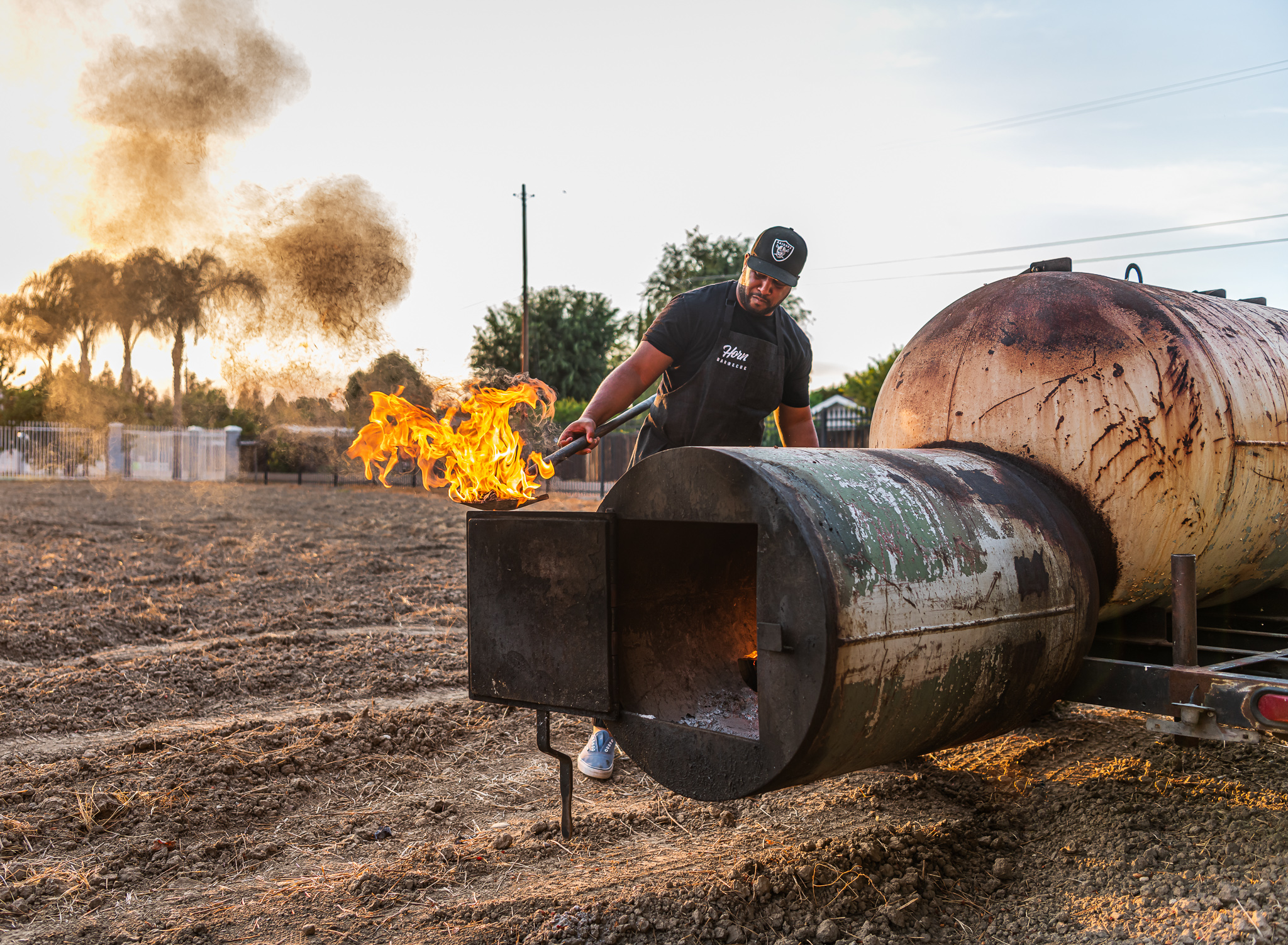
Wow. Well, you touched on two things I grasp from someone that loves barbecue: patience is a virtue and having a clean fire. I know some pitmasters have their own seasoning, or they just use salt and pepper. What do you use to season your brisket?
We grew up wanting to season our food a little bit more than just putting salt and pepper. So, what I do is use that as a base. I don’t want to put too much flavor on the brisket. You still want to be able to taste the quality of the meat, but I use salt and pepper as a base. Then, I add a few more seasonings from there. I want our guests or whoever is eating the food to taste the great quality beef, but you also want it to be savory. You want it to be seasoned well, something that they’ll remember. The majority of spices that we put in there is pepper. So, we’re doing like we’re doing about three parts black pepper, 16 mesh black pepper, and one part kosher salt. We like to keep everything granulated because I don’t want the rub to be too pasty. We never rub the rub into the meat. So, once it’s seasoned, I pat the meat as it goes onto the smoker, and we let it sit that way, which gives it a consistent bark.
So, when you do a rub on the brisket, how does that impact the flavor?
I want to get a consistent bark every time I cook, so I always do the same thing. I keep it consistent. There’s nothing wrong with rubbing it in there. I feel like if you’re using these other seasonings – like paprika, cayenne, onion, or garlic – what happens is that the rub cakes up. So, when you get the finished product, whether you’re spraying it throughout the cook or adding sauce or whatever, it cakes up. I don’t want that with the seasoning. I’ve gone to a lot of barbecue spots where you’ll get ribs, or you’ll get chicken, pick it up to try to bite into it, and you have it all over your fingernails. So, you create this beautiful surface of rub because once the bark settles, it becomes really hard and gels with the fat. So, as you’re spraying it throughout the cooking process, I don’t want to compromise that at all. So, I’m always thinking of these little things when I cook.
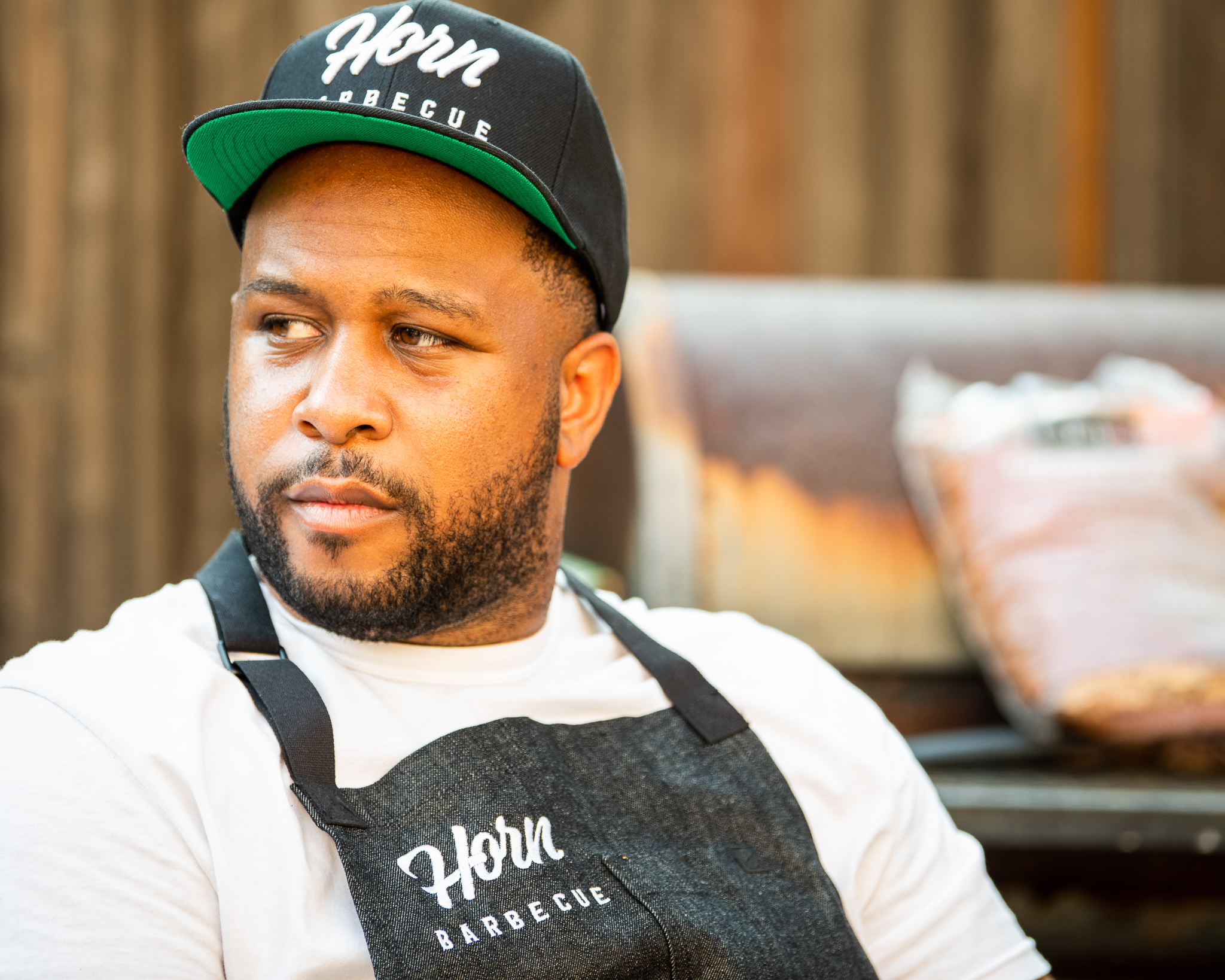
That makes sense. Here in Texas, mesquite and post oak are common woods. Does the type of wood matter in California and for your barbecue, in particular?
Absolutely. Wood is extremely important. If we were down South, I would be using hickory. If I were living in Texas, I would be using post oak. They use a lot of post oak. And if you go down to other parts of Texas, they use mesquite and these different types of wood. So, you want to use what you have locally. What we have out here is white oak and red oak. We have access to mesquite, but I use strictly white oak. It gives a really great smoky flavor. It’s not too heavy or really harsh or abrasive like I’d say mesquite wood is. So, I use oak, but sometimes we’ll mix in a little bit of almond as well.
That leads to another thought that I had. What’s one thing you do differently with your BBQ akin to no one else?
I think the amount of attention that goes into our brisket because a lot of times people will trim their brisket, salt and pepper it, then throw it on, and they’re trying to reach an internal temperature of like 203 or something. It’s all over the internet. That’s what a lot of these guys are doing in their backyard or even guys that have restaurants. They feel like that’s the standard. I take my brisket a little bit further. I like that fat to render a little bit more. I’m very intricate throughout the cooking process with how I cook my brisket. We pay close attention to it. I don’t lift too much, but when we do, we rotate the brisket. So, usually, we’ll have our point towards the fire majority of the cook, and I’ll rotate it, and we’ll put the flat towards the fire. And I’ve even done it where we’ve rotated it again. I like to put in the drippings from the brisket in the water pan – just little things I could do to try to add flavor by playing around with the damper opening up more smoke on it, and we finish it, lower the temp, and then I’ll close the damper a little bit to get more smoke on it.
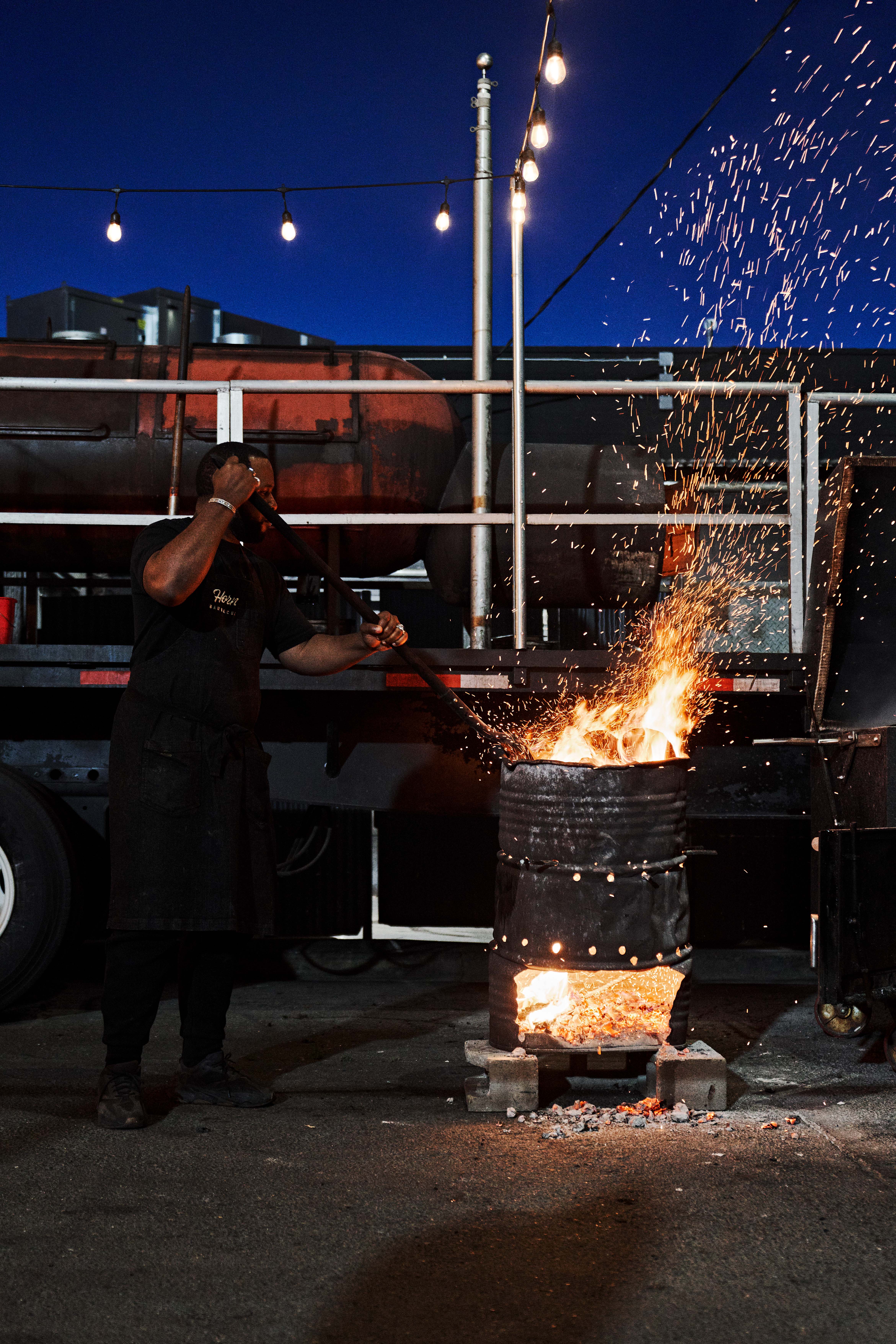
Nice. Now I’m getting hungry! So, what advice would you give someone that’s on the come up as a chef or pitmaster?
I would say the biggest thing would be just to get started. Take that first step. I heard that there’s a saying that a majority of 1,000 miles begins with one step. You need to convince yourself to really be committed. You need to be all in because committing yourself to barbecue and these long cooks is a labor of love and a time commitment.







